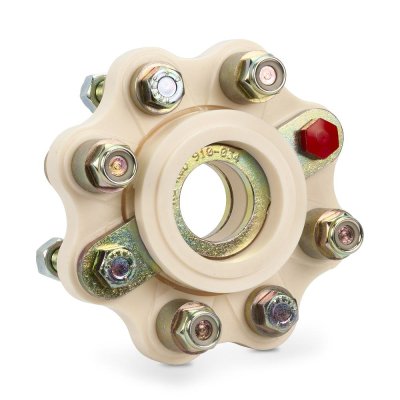What you have certainly looks like a flexible shaft coupling. Greg described the basic typical construction of how most of them are made, the intent being to reduce structure borne noise from the shaftline.
What you describe is more like a clutch function, as in resistance at the prop disengages the shaft. Not knowing the construction of your unit, for the typical coupling this would not happen.
For a typical coupling its usually 2 things that happen:
Almost always a significant vibration occurs which causes the operator to reduce speed and seek repair. This is because the resilient medium(rubber?) is damaged, worn or compromised by something like a contaminant. Most couplings are designed to get you home, although sometimes at reduced speed.
The other type failure is the medium fails and the shaft doesn't spin at all.
In reading your description it seems you are basing some of your assumption on: "oil pressure is present, hence it has to be spinning" and not a MKI eyeball observation. Maybe take a look and see what's actually happening.
gkesden makes a good observation, it may not be the coupling at all. As I mentioned they do not "usually" act as clutches as you describe, but transmissions do.
Transaxial also notes something worth looking at, and if this is happening the shaft may be scored from the bolt slipping. Often hubs for shafts are keyed and the key may have broken as well, although this should fail and not act as a clutch.

An R & D Flexible Shaft Coupling




